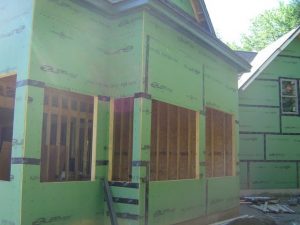Home Improvement Loans are available for both Home Remodeling projects and Fixer Up Home Purchases
By Mark J. Donovan
|
|
Home improvement loans are used for either financing home improvements to an existing home owned by a homeowner, or for buying a new home that is in need of home improvement repairs to get it to a proper occupancy level. Getting a home improvement loan in today’s economy and housing market conditions is tough; however it is not impossible if you have good credit.
Home Improvement Loans for Existing Home Ownership When seeking a home improvement loan for the purposes of improving an existing home, such as building home additions, remodeling kitchens, bathrooms, and basements, and even for improving landscaping there are a number of alternatives for the homebuyer. |
They can obtain a home equity loan, refinance the home, or even obtain a personal loan. All have pros and cons and are dependent on the homeowner’s unique financial situation as well as the home improvement loan market conditions.
Home Improvement Loans for Buying Fixer-Up Homes
Getting a home improvement loan for buying an existing home, such as a fixer-up can be more difficult, however it is not impossible. For example, the U.S. Department of Housing and Urban Development (HUD) offers a loan program known as FHA 203(k) that allows a homebuyer to buy, or refinance a home and include in the proceeds of the home improvement loan the monies necessary for making the home improvement. The loan works similar to a home construction loan.
As the home improvements are made, funds from the escrow are released to the home improvement contractor, via draw requests, for work performed. However, the contractor is only paid 90% of the draw request to ensure that he completes all of the home improvement work.
| The FHA 203(k) loan is available to all borrowers and income levels for those homeowners who plan to occupy the home. This includes multiunit dwellings up to four units. FHA 203(k) home improvement loan terms are for fixed rate, 30 or 15 year periods, or for one year adjustable ARMS. They are assumable to qualified buyers with zero percent down.
So whether you are an existing homeowner looking for a home improvement loan to remodel a kitchen, or if you are a want-to-be homeowner who is looking at buying a fixer-up and needs home financing that includes a home improvement loan component to the financing package there is a solution for all. Talk with your local real estate agents and your banks to see what home improvement loan solution is right for unique loan requirements. |
 |
For help on building a new custom home, see HomeAdditionPlus.com’s New Home Construction Bid Sheet. The New Home Construction Bid Sheet provides you with the knowledge on how to plan a custom home building project, and what to look for when hiring contractors for your new home construction. It also includes a detailed cost breakdown table and spreadsheet for estimating your own new home construction building costs.
Free Home Addition Price Quotes with No Obligation!
Fill out our 3-5 minute quick and easy form, and receive a free price quote on a house addition from one of our prescreened and licensed home addition contractors. This process is free and there is no obligation to continue once you receive your home addition price estimate.

